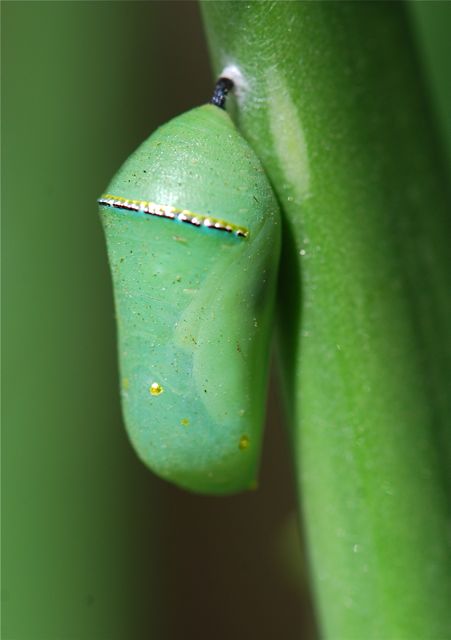This week all the caterpillars from the last two weeks have disappeared. But don’t be sad, because now they are chrysalises.

The queen butterfly forms within this delicate green structure with gold beading. It looks a lot like the monarch butterfly chrysalis.

I am happy to report the queen butterfly from this chrysalis successfully emerged and flew away.

The orange dog caterpillar formed a chrysalis that would be well camouflaged on the bark of the tree.

This one is still transforming inside.
What about the tobacco hornworm? It has formed a pupa, but it is hard to show you because hornworms pupate in the soil.
Related Activity: Investigate where butterflies and moths spend the winter.
Different butterflies and moths may spend the winter as eggs, larvae, chrysalises, cocoons or adults. See if you can find some of these.
 We’ve been watching a chrysalis that’s attached to one of the stems. Can you guess what kind of butterfly it belongs to?
We’ve been watching a chrysalis that’s attached to one of the stems. Can you guess what kind of butterfly it belongs to? This morning it had darkened up and the shape had changed.
This morning it had darkened up and the shape had changed. Sure enough, a wrinkly butterfly emerged.
Sure enough, a wrinkly butterfly emerged. On a nearby plant, this female queen butterfly laid eggs for the next generation.
On a nearby plant, this female queen butterfly laid eggs for the next generation.







